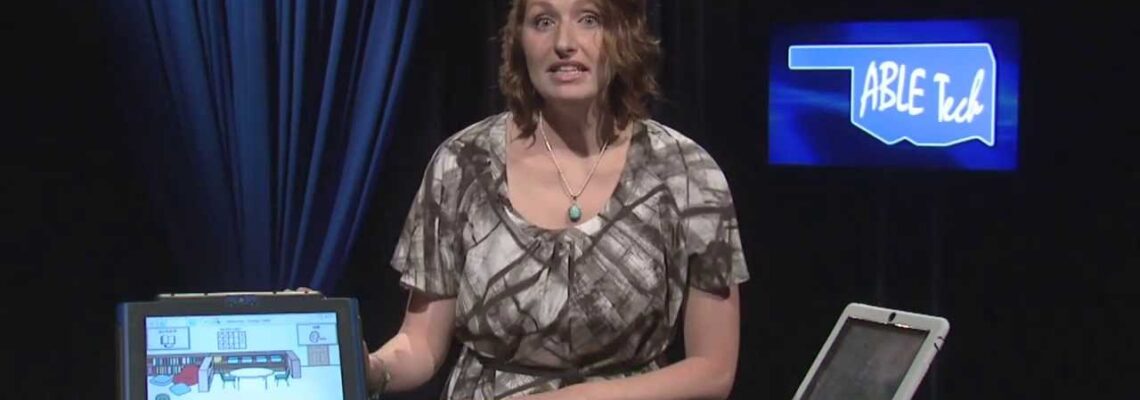
Imagine having something important to say, but not being able to get the words out. For people with communication disorders, this is a reality. That’s where speech generative devices come in. Patients with language disorders now have access to many innovative devices available in the market.
These devices use cutting-edge technology to convert text or symbols into spoken words, enabling individuals to express themselves with ease. Discover the World of Speech Generating Devices with Our Speech Therapists
From simple picture boards to advanced devices that track eye movements, speech generating devices are changing the lives of people with communication disorders, providing a new voice and a new way to connect with the world.
The specialists explains that speech is one of the most fundamental ways we communicate and connect with others. It allows us to express our thoughts and emotions, share our experiences, and build relationships. Without speech, social interaction would be greatly hindered.
For those with communication disorders, speech generative devices can play a vital role in helping them connect with the world around them, breaking down barriers and empowering them to communicate their unique perspectives.
Communication disorders affect millions of people worldwide, making it difficult for them to speak or understand language. From developmental speech and language disorders to aphasia and stuttering, the impact of these conditions can be significant, affecting quality of life and social interaction.
Fortunately, speech generative devices are becoming increasingly accessible and can help individuals with communication disorders overcome these challenges and thrive in their personal and professional lives.
Low-tech communication aids are simple yet effective tools that can help people with communication disorders express themselves. These aids include alphabet and picture boards that allow individuals to point to letters, words, or symbols to communicate their thoughts and feelings. While basic, these aids can be invaluable for those with communication disorders.
Mid-tech communication aids are electronic devices that offer a more advanced way to communicate compared to low-tech options. These aids include portable speech generative devices and tablet-based communication apps that use touch screens to display images or text. They are more versatile than low-tech aids, offering greater flexibility and ease of use.
electronic interface, these devices can be used easily and conveniently at any time or place.
2. Tablet-based communication apps: These are mid-tech communication aids that use touch screen technology to generate These apps can be downloaded onto a tablet and customized to meet the unique needs of the individual with a communication disorder.
High-tech communication aids are advanced devices that use cutting-edge technology to help individuals with communication disorders communicate. These aids include dedicated speech generating devices and eye-tracking speech generating devices that offer sophisticated options for generating speech and interacting with technology.
Speech-generating devices offer a range of benefits for individuals with communication disorders. They provide a means of expressing oneself, enhancing social interaction, and promoting independence. The benefits of speech-generating devices are as following:
Choosing the right speech generating device depends on several factors, including the type and severity of the communication disorder, communication goals, and physical ability.
When choosing a speech generating device, it’s important to consider the type and severity of the communication disorder, communication goals, and physical ability. Factors such as the size and portability of the device, voice quality and range of communication options, and customization options should also be taken into account to ensure the best fit for the individual’s unique needs.
The device should be tailored to the individual’s needs, with the right level of functionality and features to support effective communication. With the right device, individuals with communication disorders can overcome their challenges and thrive in their personal and professional lives.
Understanding the individual’s communication goals can help ensure that the device selected meets their unique needs and preferences.
Ensuring that the device selected is appropriate for the individual’s physical abilities can promote ease of use and a more positive user experience.
There are several resources available to help individuals with communication disorders and their families find the right speech generating device. Speech-language pathologists, assistive technology specialists, and online support groups can offer valuable guidance and advice.
Additionally, manufacturers of speech generative devices often provide free trials or loaner programs to help individuals try out different devices and find the best fit for their needs.
Hey, don’t be shy! If you have a communication disorder, it’s time to speak up and try out a speech generating device. They’re like a superhero sidekick, helping you communicate with ease and conquer the world. Plus, with all the customization options available, you can create a voice that’s uniquely you. So don’t hold back – embrace your new superpowers and start expressing yourself today!
Speech generating devices have transformed the lives of individuals with communication disorders, providing a new way to connect with the world and achieve their full potential. As technology continues to advance, the future of speech generative devices looks bright, with the potential for even more personalized, intuitive, and accessible devices.
With ongoing innovation and support, individuals with communication disorders can look forward to a world where communication barriers are a thing of the past.